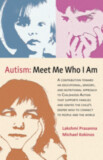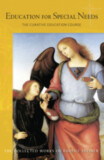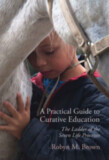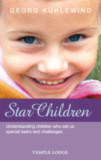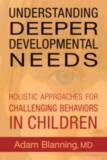Being Human
Diagnosis in Curative Education
Foreword by Michaela Glöckler, MD
Introduction by Cornelius Pietzner
Translated by Catherine E. Creeger
- Publisher
SteinerBooks - Published
11th July 1994 - ISBN 9780880102803
- Language English
- Pages 156 pp.
What does it mean to be human? Human development unfolds in a twofold way. On the one hand, there is an ever-more profound incarnation, or “inhabitation,” of the physical body. On the other hand, there is the increasing discrimination of the individual objects of the world.
Difficulties and obstacles along this path can lead to so-called disabilities. König’s approach to curative education allows us to see these disabilities as meaningful ways of coping with or resolving the various problems that arise in living in a physical body. From this point of view, “disabilities” are exaggerated forms of ways we all use to cope with life.
“The point is not only to see the deviations, but to see them against the mighty backdrop of a comprehensive child anthropology.” Being Human presents the outline of just such a comprehensive anthropology.
Being Human is of value not only to those working in special education, but to anyone interested in the dynamics of incarnation and “normal” development.
C O N T E N T S:
Foreword by Michaela Glöckler
Introduction by Cornelius Pietzner
PART I
Three Ways of Diagnosing
Some Guiding Images in the Area of Motor Disturbances: The Lonely Individual
Some Guiding Images in the Area of Sensory Disturbances
The Problem of Right and Left
The World of Language
The Gestalt of the Child
PART II
An Introduction to Convulsive Disorders
Different Types of Convulsive Disorders
Epilepsy and Hysteria
Karl König
Dr. Karl König (1902–1966) born on September 25th 1902 in Vienna, Austria, the only son of a Jewish family who owned a shoe shop. He studied zoology, biology, and medicine at the University of Vienna, graduating in 1927. During his studies on embryology, König encountered the works of Rudolf Steiner through Goethe's scientific writings. He immediately identified with Steiner and was soon acquainted with a number of his followers, including Ita Wegman.
Upon graduation, König was offered several high-profile positions in Vienna, but instead accepted an invitation from Ita Wegman to join her clinic in Arlesheim, Switzerland.
König's time at the Clinic would shape the Camphill movement. It was here that he met his wife and co-founder, Tilla Maasberg, and it was here that he first witnessed the Advent Garden. During this festival, during which children with learning disabilities circle a spiral of moss, lighting a candle from a large central beacon, he promised to dedicate his life “to the care and education of these children.”
Following his time at Arlesheim, König moved to Germany and was involved in founding the Pilgramshain Institute—one of the early curative educational (therapeutic) centers based on anthroposophy. However, due to the political pressure of the Nazi regime, König was forced to leave Germany in 1936. He returned to Vienna, where he operated a successful medical practice and led anthroposophic study groups until 1938.
Fleeing Austria after Nazi annexation in 1938, König became part of a small group of doctors, teachers, and artists to be granted political asylum in the United Kingdom in 1939. König moved to Aberdeenshire, Scotland, where this group founded a home for children with learning disabilities, which became the beginning of the Camphill movement. After World War II, more schools were established, as well as curative education villages for adults with disabilities, based on the ideal of working together as a community.
In the following decades, König's Aberdeenshire community grew and expanded into Britain, Europe, and North America, becoming the Camphill movement we know today. During this period, König worked tirelessly to help children and adults with special needs through publications, talks, and seminars—as well as by establishing communities around the world.
Karl König returned to Germany in 1964 and began yet another community, this one near Überlingen, on Lake Constance (Bodensee), where he died in 1966.



